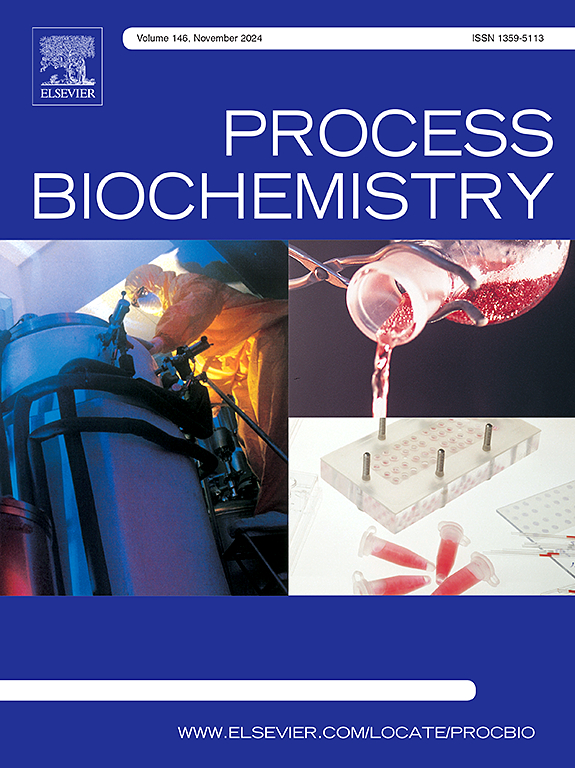利用工程硝基还原酶和 V2O5 高效生物还原 3-硝基邻苯二甲酸
IF 3.7
3区 生物学
Q2 BIOCHEMISTRY & MOLECULAR BIOLOGY
引用次数: 0
摘要
本研究成功鉴定并设计了一种强效硝基还原酶,并将其用于高效、环保的化学生物硝基还原过程,从 3-硝基邻苯二甲酸合成 3-氨基邻苯二甲酸。来自 Azorhizobium caulinodans ORS 571(AcNTR)的野生型硝基还原酶表现出强大的催化活性。通过易错 PCR 诱变,产生了一个突变变体(Q40R/K267R),其催化效率提高了 3.1 倍。分子对接分析表明,R40 和 R267 位置的突变改变了酶表面的静电特性,改变了活性口袋入口的构象,从而提高了催化性能。此外,当突变体 Q40R/K267R 与五氧化二钒 (V2O5) 结合使用时,可有效防止生物转化过程中 3- 羟基氨基邻苯二甲酸的积累。在优化的反应条件下,转化率达到 90.0%,仅需 12 小时就能将 100 克/升的 3-硝基邻苯二甲酸转化为 3-氨基邻苯二甲酸。这些发现凸显了生物催化过程在大规模合成应用中的巨大潜力。本文章由计算机程序翻译,如有差异,请以英文原文为准。
Efficient bio-reduction of 3-nitro phthalic acid using engineered nitroreductase and V2O5
In this study, a potent nitroreductase enzyme was successfully identified and engineered, which was then employed in an efficient and environmentally friendly chemo-bio nitroreduction process to synthesize 3-amino phthalic acid from 3-nitro phthalic acid. The wild-type nitroreductase from Azorhizobium caulinodans ORS 571 (AcNTR) demonstrated robust catalytic activity. Through error-prone PCR mutagenesis, a mutant variant (Q40R/K267R) was generated, which exhibited a 3.1-fold increase in catalytic efficiency. Molecular docking analysis revealed that the mutations at positions R40 and R267 altered the electrostatic properties of the enzyme's surface, modifying the conformation of the active pocket entrance and thereby enhancing catalytic performance. Additionally, when the mutant Q40R/K267R was combined with divanadium pentaoxide (V2O5), the accumulation of 3-hydroxyamino phthalic acid during the biotransformation process was effectively prevented. Under optimized reaction conditions, a 90.0 % conversion rate was achieved, transforming 100 g/L of 3-nitro phthalic acid into 3-amino phthalic acid in just 12 h. These findings highlight the significant potential of biocatalytic processes for large-scale synthesis applications.
求助全文
通过发布文献求助,成功后即可免费获取论文全文。
去求助
来源期刊

Process Biochemistry
生物-工程:化工
CiteScore
8.30
自引率
4.50%
发文量
374
审稿时长
53 days
期刊介绍:
Process Biochemistry is an application-orientated research journal devoted to reporting advances with originality and novelty, in the science and technology of the processes involving bioactive molecules and living organisms. These processes concern the production of useful metabolites or materials, or the removal of toxic compounds using tools and methods of current biology and engineering. Its main areas of interest include novel bioprocesses and enabling technologies (such as nanobiotechnology, tissue engineering, directed evolution, metabolic engineering, systems biology, and synthetic biology) applicable in food (nutraceutical), healthcare (medical, pharmaceutical, cosmetic), energy (biofuels), environmental, and biorefinery industries and their underlying biological and engineering principles.
 求助内容:
求助内容: 应助结果提醒方式:
应助结果提醒方式:


